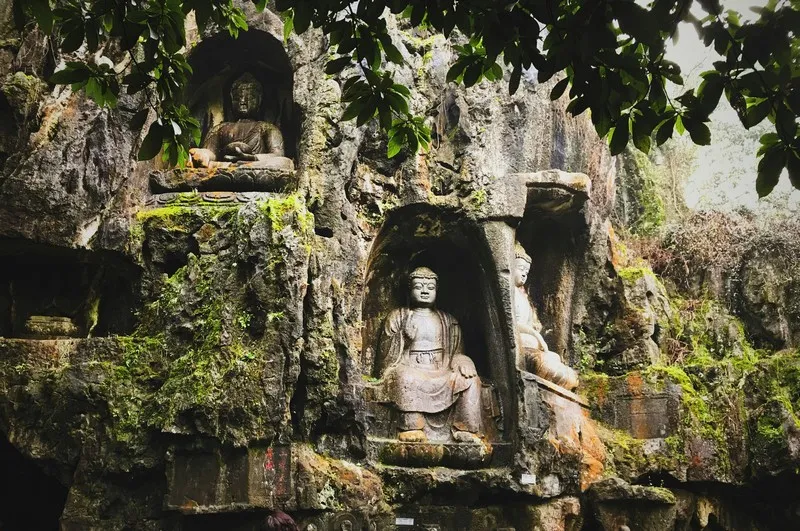Table of Contents
- Historical Background
- The Syncretism of Shinto and Buddhism
- Philosophical Foundations
- Rituals and Practices
- Shinto Buddhism in Contemporary Japan
- Conclusion
Shinto Buddhism, a syncretic belief system unique to Japan, combines elements of Shinto, Japan’s indigenous spirituality, and Buddhism, which was introduced from China and Korea in the 6th century. This amalgamation of religious practices and beliefs reflects Japan’s historical, cultural, and social developments, creating a complex and layered religious landscape. Understanding Shinto Buddhism requires an exploration of its historical origins, philosophical foundations, rituals, and its role in Japanese society.
Historical Background
Shinto: The Indigenous Spirituality
Shinto, meaning “the way of the gods,” is Japan’s oldest religion, deeply rooted in the country’s culture and history. Shinto is an animistic belief system that venerates kami, or spirits, which inhabit natural phenomena, objects, and ancestors. Unlike many other religions, Shinto does not have a founder, sacred scriptures, or a structured theology. Its practices are centered around rituals and ceremonies designed to appease the kami, ensure good harvests, and purify individuals and communities.
Shinto shrines, known as jinja, are central to the practice of this religion. These shrines, often located in places of natural beauty, serve as the dwelling places of kami and the sites of various rituals and festivals. Shinto rituals emphasize purification, offerings, prayers, and dances, all aimed at maintaining harmony between humans and the kami.
Introduction and Spread of Buddhism
Buddhism entered Japan in the mid-6th century, primarily from China and Korea. Initially met with resistance, it eventually gained acceptance, particularly among the ruling class. The official adoption of Buddhism can be traced to Prince Shōtoku, who championed the religion as a means of unifying the country and strengthening the state. Buddhism brought with it a rich tapestry of texts, philosophies, and rituals, as well as a well-organized monastic system.
Buddhism’s appeal lay in its sophisticated doctrines, such as the Four Noble Truths and the Eightfold Path, which offered a systematic approach to understanding and alleviating suffering. Moreover, the Buddhist concepts of karma and reincarnation provided a moral framework that complemented existing Shinto beliefs.
The Syncretism of Shinto and Buddhism
Initial Interaction and Coexistence
The interaction between Shinto and Buddhism began with the introduction of Buddhist practices into Shinto rituals. This period, known as shinbutsu shūgō (the amalgamation of kami and Buddhas), saw the two religions coexist and mutually influence each other. Shinto kami were often interpreted as manifestations of Buddhist deities, and Buddhist temples were built adjacent to Shinto shrines.
A notable example of this syncretism is the establishment of the syncretic temple-shrine complexes, such as the Tōdaiji Temple in Nara, where the Great Buddha statue was enshrined alongside Shinto deities. This blending facilitated the integration of Buddhist cosmology with Shinto mythology, allowing for a harmonious coexistence.
Development of Ryōbu Shintō
By the Heian period (794-1185), a more formalized synthesis known as Ryōbu Shintō, or “Dual Shintō,” emerged. This system, propagated by the Shingon Buddhist sect, posited that Shinto kami were local manifestations of Buddhist deities. For instance, the sun goddess Amaterasu was equated with Dainichi Nyorai, the cosmic Buddha. Ryōbu Shintō provided a theological framework that reinforced the interdependence of the two religions.
Edo Period and the Separation of Kami and Buddhas
The Edo period (1603-1868) witnessed an institutionalization of the syncretic practices. However, the Meiji Restoration (1868) marked a significant shift, as the new government sought to establish Shinto as the state religion and separate it from Buddhism. This period, known as shinbutsu bunri (separation of kami and Buddhas), involved the removal of Buddhist elements from Shinto shrines and the suppression of Buddhist institutions. Despite these efforts, the syncretic traditions persisted at the popular level, reflecting the deep-rooted interconnectedness of the two religions in Japanese culture.
Philosophical Foundations
Shinto’s Philosophical Tenets
Get the full article AD FREE. Join now for full access to all premium articles.
View Plans & Subscribe Already a member? Log in.





